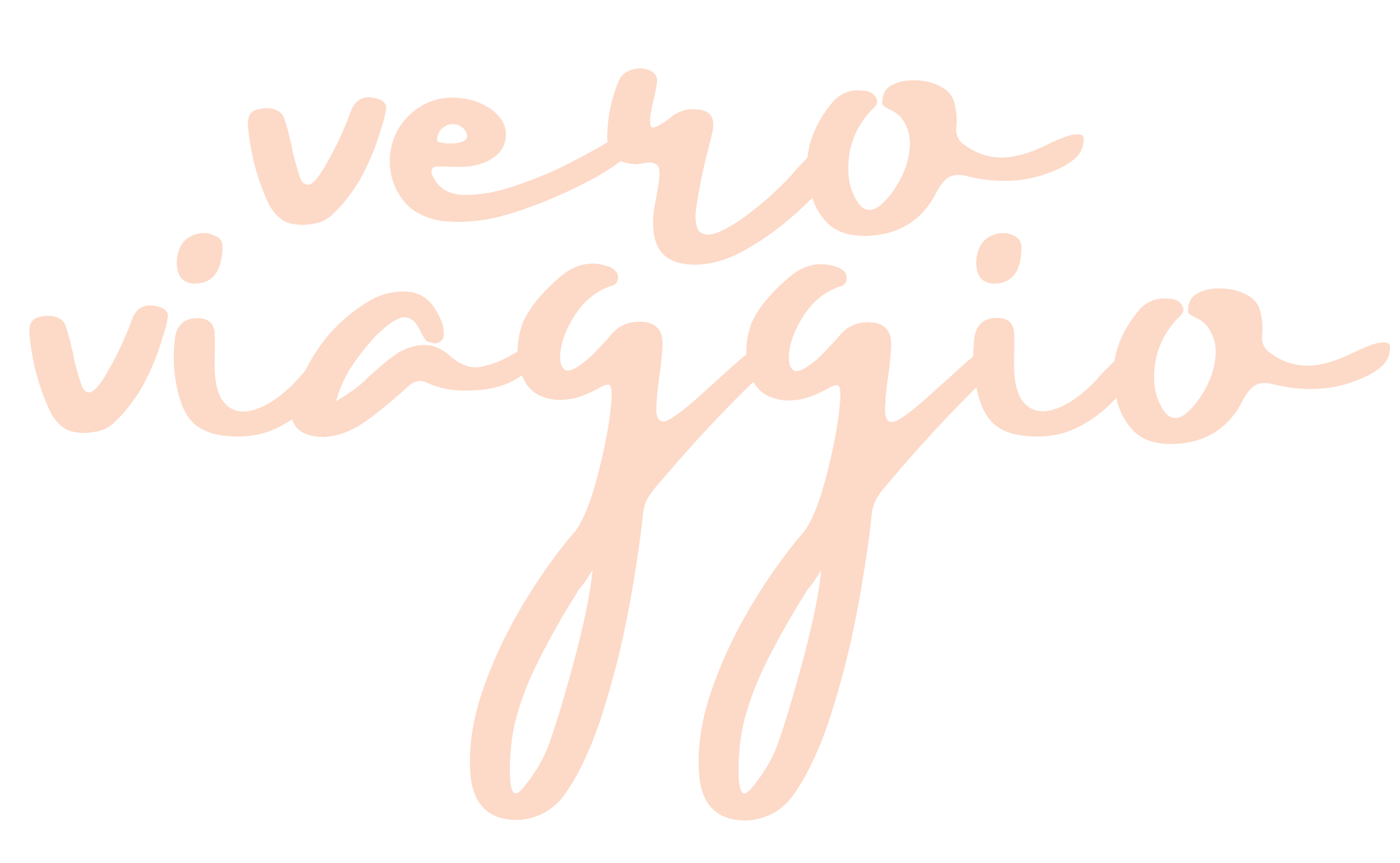Read Time: 4 Minutes Subscribe & Share
Not Sparking Joy
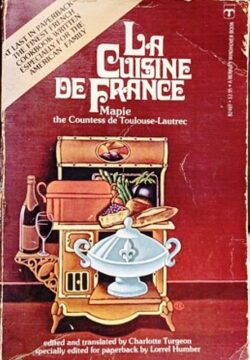 Although I collect cookbooks, I am certainly not in the league with other cooking addicts who boast libraries of thousands of titles. I would regularly edit my collection so that the number was well under five hundred. The RWM (Resident Wine Maniac), who is loath to dispose of a wine even if it is in questionable condition, can never understand my predilection for disposing of cookbooks I don’t use. I must admit that I have a few post-purge regrets. One of these was my paperback copy of La Cuisine De France by Marie-Pierre “Mapie” de Toulouse-Lautrec. I am sorely tempted to repurchase it.
Although I collect cookbooks, I am certainly not in the league with other cooking addicts who boast libraries of thousands of titles. I would regularly edit my collection so that the number was well under five hundred. The RWM (Resident Wine Maniac), who is loath to dispose of a wine even if it is in questionable condition, can never understand my predilection for disposing of cookbooks I don’t use. I must admit that I have a few post-purge regrets. One of these was my paperback copy of La Cuisine De France by Marie-Pierre “Mapie” de Toulouse-Lautrec. I am sorely tempted to repurchase it.
Marie Pierre Adélaïde Lévêque de Vilmorin was born in 1901 into a family of horticulturist elites. The Vilmorin name is as famous with French gardeners as Burpee’s is in the United States. She is perhaps overshadowed by her younger sister Louise de Vilmorin, a prolific and sharp-witted writer who had some high profile affairs with Antoine de Saint-Exupéry, Orson Welles and Alfred Duff Cooper. Marie Pierre, after a trial marriage to a distant Vilmorin cousin, married the nephew of the painter Henri de Toulouse-Lautrec, who had inherited the title of Comte.
1954BJ – Before Julia
She embarked on a career first as a gossip/society writer and theater reviewer for Femina Magazine and later as a food writer for Elle, using the nickname “Mapie” and of course her highly marketable last name. In the latter she truly found her niche. Mapie wanted to make cooking easier and more accessible in post-war France and even developed the detachable recipe card for Elle Magazine. She made Quiche Lorraine a household word with her effortless and highly successful recipe. As a sidenote from a film fanatic (myself) this dish was introduced to an American audience by Cary Grant in “To Catch A Thief”.
While Julia Child was embarking on her fabled career of introducing French cooking in both its high and more approachable guises, Mapie was already a household name in France. She was known for testing and marketing delicious regional dishes to a national audience that no longer was interested in the grand cuisine of wealthy households. We Americans can thank her for introducing us to doable versions of Coquilles Saint Jacques and Tarte Aux Amandes. In fact, Lindsay Shere’s famous almond tart for Chez Panisse in the 1980s is based on Mapie’s recipe.
and more approachable guises, Mapie was already a household name in France. She was known for testing and marketing delicious regional dishes to a national audience that no longer was interested in the grand cuisine of wealthy households. We Americans can thank her for introducing us to doable versions of Coquilles Saint Jacques and Tarte Aux Amandes. In fact, Lindsay Shere’s famous almond tart for Chez Panisse in the 1980s is based on Mapie’s recipe.
She even codified dishes from France’s colonial past, such as her Moroccan inspired lamb with lemon, saffron and cinnamon. With a postwar middle-class American population flowing through France via military, diplomatic and business opportunities, both she and the editors of Elle Magazine saw an opportunity to publish a book of her recipes for American readers. Not only did she want to rewrite her popular recipes for Americans, but she traveled to the US to study home kitchens and equipment. She noted time constraints and ingredients that could be substituted. Fortunately you can download this book through Internet Archive
Orion Press published the American edition of La Cuisine de France in 1964 and then it was republished in 2004- copies are available hrough used book sellers. My personal choice is Bonnie Slotnick Cookbooks. And while there are very few photos available now of Mapie, one of my favorites is of her in hat, pearls, corsage and fur coat presiding over a roast turkey. I think my mother would have enjoyed cooking like that.
French Books for American Cooks
 I remember cooking from her book and enjoying the results, particularly her mocha cake, but then my husband and I became entranced with the PBS series starring Julia Child and we avidly cooked out of her TV Series cookbook with occasional stabs at Mastering The Art of French Cooking, Volume I. Later,
I remember cooking from her book and enjoying the results, particularly her mocha cake, but then my husband and I became entranced with the PBS series starring Julia Child and we avidly cooked out of her TV Series cookbook with occasional stabs at Mastering The Art of French Cooking, Volume I. Later,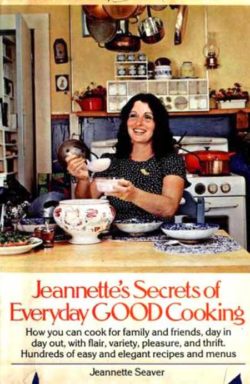 when I had opened the store and bought and splattered happily through Jeannette Seaver’s cookbook, Jeannette’s Secrets of Everyday Good Cooking, Mapie’s paperback was shoved further back on the shelf.
when I had opened the store and bought and splattered happily through Jeannette Seaver’s cookbook, Jeannette’s Secrets of Everyday Good Cooking, Mapie’s paperback was shoved further back on the shelf.
Fortunately, I found that Maida Heatter, who was an inveterate recipe collector with a commanding sweet tooth – had extracted this recipe that Mapie wrote for McCall’s Magazine in 1959. She included a very precise (Mapie occasionally was a bit vague on measurements and techniques) version of the cake. While it is not the bull’s eye of chocolate that my beloved Chocolate Nemesis is (see this post for two versions of this drop-dead chocolate cake), it is one that the RWM prefers – with whipped cream, of course. You should not make it with a chocolate that is over 62% cocoa solids. It can be refrigerated, but I prefer it kept at room temperature in a cool area, but well covered. A small slice at midnight is a great nightcap with a spicy Amaro, and it is a welcome change from normal breakfast fare…with ample whipped cream of course.
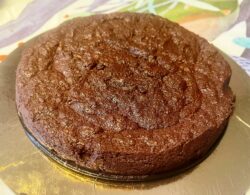

- 1 l6oz (453gr). mild bittersweet chocolate 50-62% cocoa solids
- 5 oz (142gr) unsalted butter, at room temperature, cut into small cubes
- 4 large eggs, separated
- 1 TBS. all-purpose flour
- Pinch of fine sea salt
- 1 TBS. granulated white sugar
- Preheat the oven to 425F (220C)
- Line an 8-inch (20cm) spring-form pan with parchment paper to cover the bottom. Butter the top of the parchment paper as well as the sides of the pan - you can use buttered parchment on the sides as well.
- Melt the chocolate in a double boiler over hot water - or - if you have a heavy (I use hotel weight copper normally) non-stainless steel saucepan, you can melt the chocolate safely over very low heat.
- Off heat, add the butter a little at a time to the chocolate, stirring and making sure it completely melts before adding more. Set aside to cool.
- Beat the egg yolks at high speed for 5 minutes - the mixture should be pale, creamy and silky
- Add the tablespoon of flour and mix it in.
- Fold the chocolate into the batter.
- In a clean bowl, beat the egg whites until they hold a soft shape. Add the sugar and continue to beat until they hold a definite shape.
- Fold one-half of the mixture into the chocolate (just enough to mix). Then fold the chocolate into the remaining whites. Fold until blended.
- Transfer the batter to the pan. Level the batter by briskly turning the pan back and forth.
- Bake for 15 minutes, if you are worried you can let it bake an additional 2 minutes but no more
- The cake will deflate as it cools, which is normal.
- Let the cake sit in the pan until it comes to room temperature.
- Slide a sharp knife around the perimeter to loosen the cake but do not open the pan
- Allow the cake to come to room temperature before refrigerating for a few hours.
- After the cake has chilled, remove it from the pan.Carefully use a long sharp knife to remove the cake from the pan bottom.
- You can serve this with sweetened whipped cream, a scoop of vanilla or coffee ice cream.
- It is important that you add the butter as she directs after the chocolate is off the heat. You will achieve a thick, silky almost ganache like texture.
- You must whip the egg mixture until it is almost like a soft whipped cream texture.
- I would bake this cake no longer than 17 minutes.
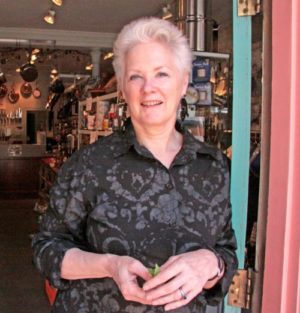
Kitchen Detail shares under the radar recipes, explores the art of cooking, the stories behind food, and the tools that bring it all together, while uncovering the social, political, and environmental truths that shape our culinary world.
